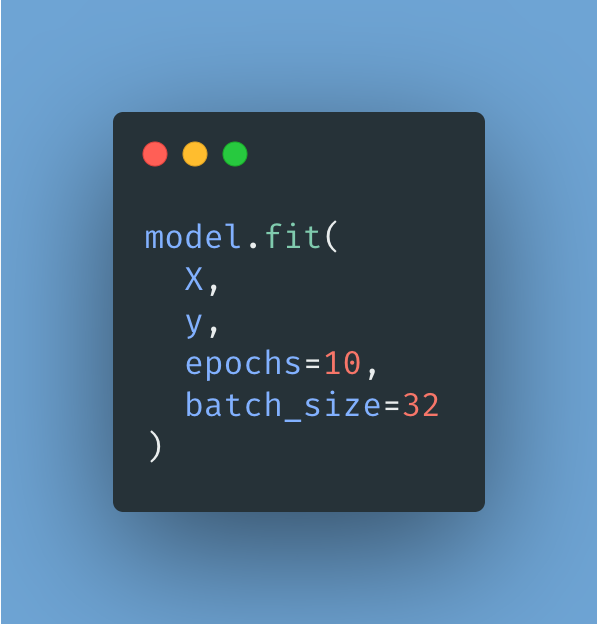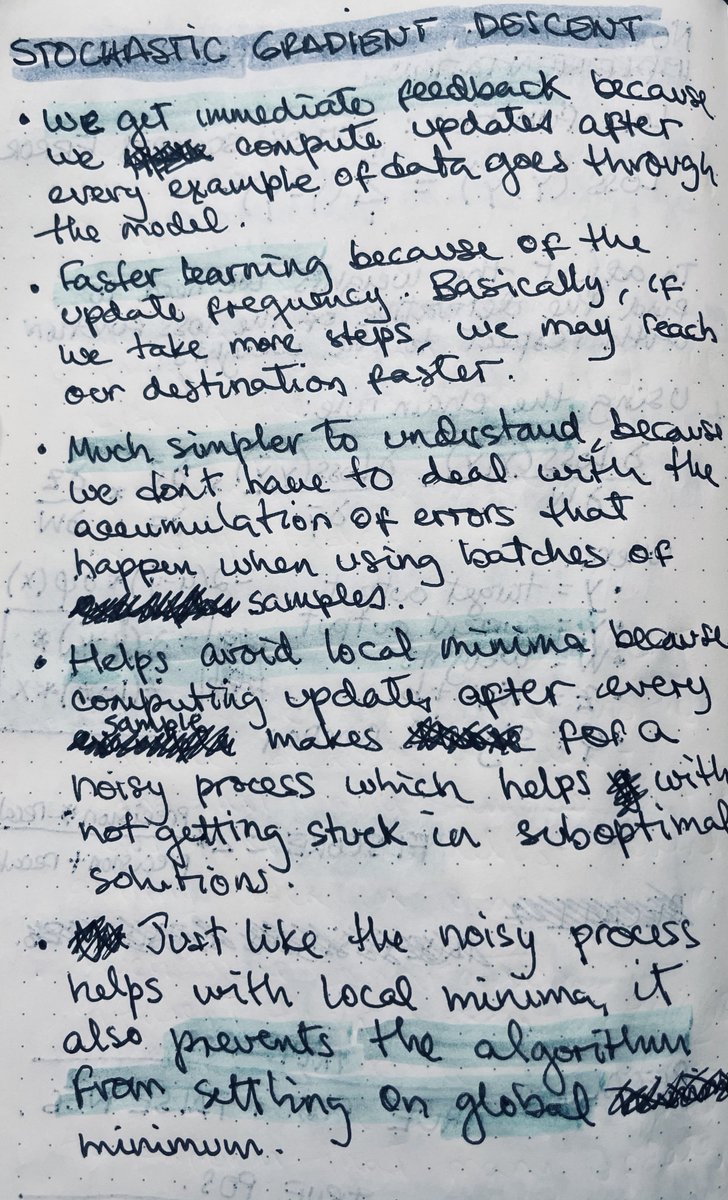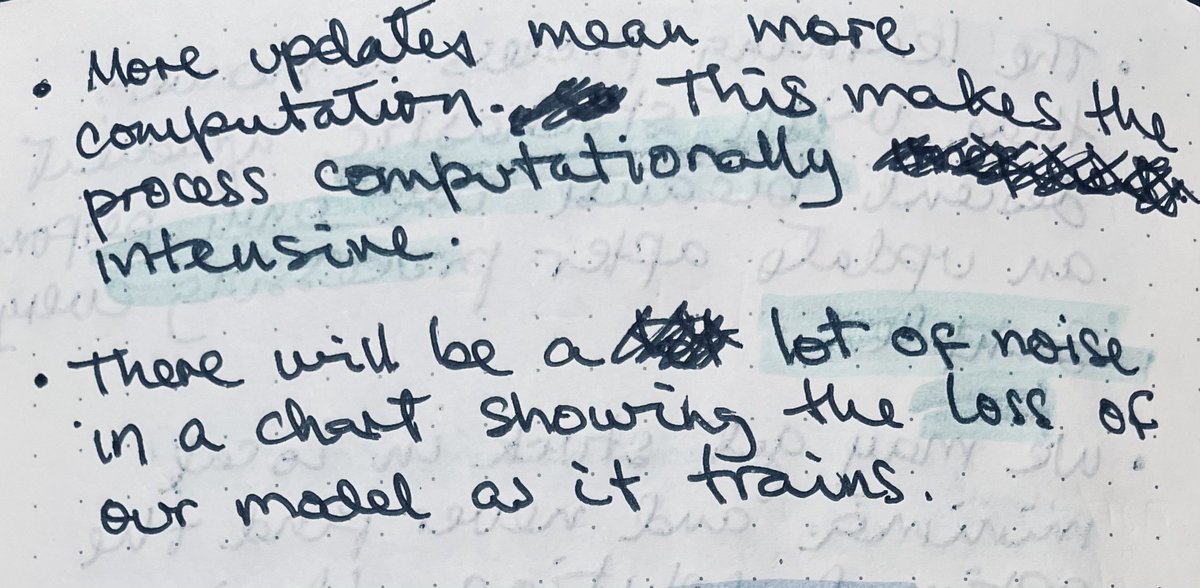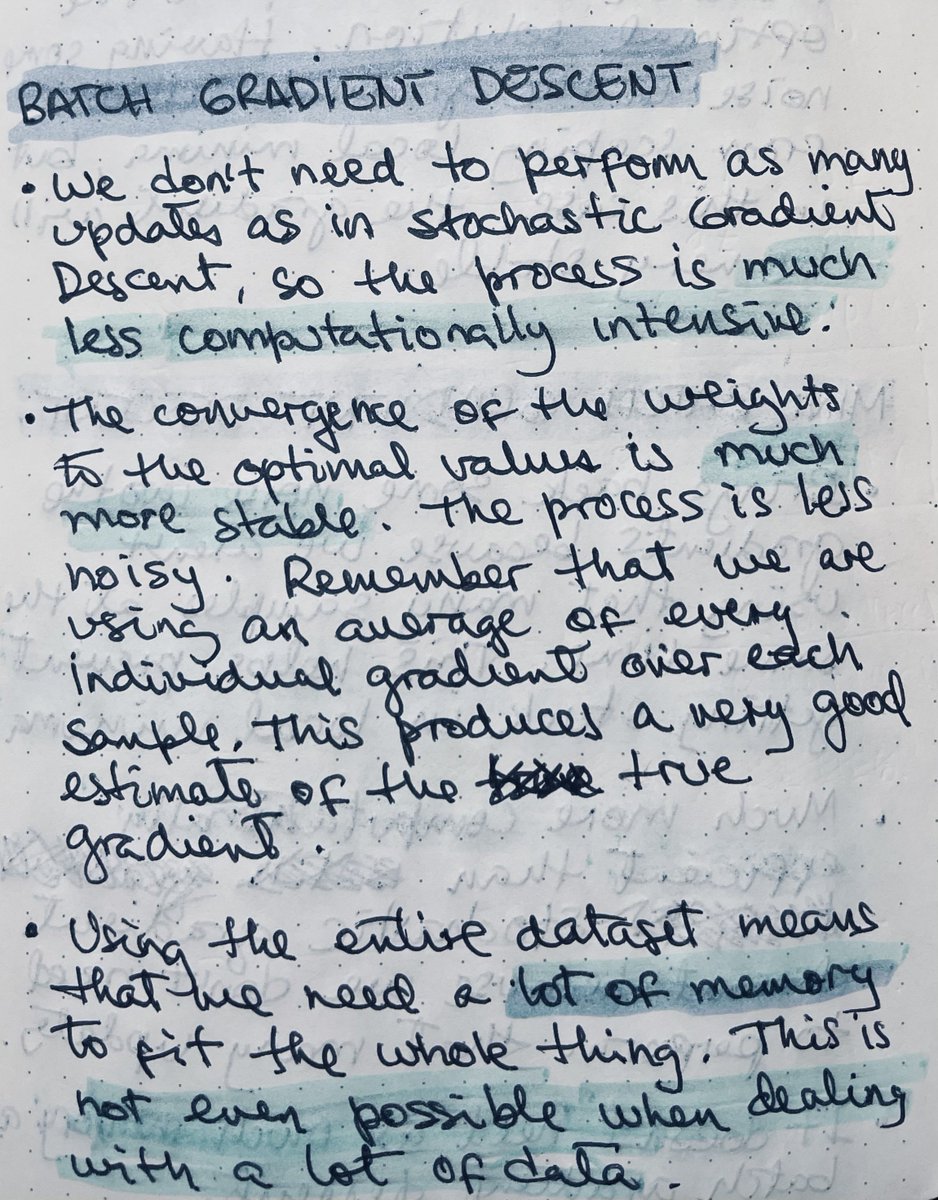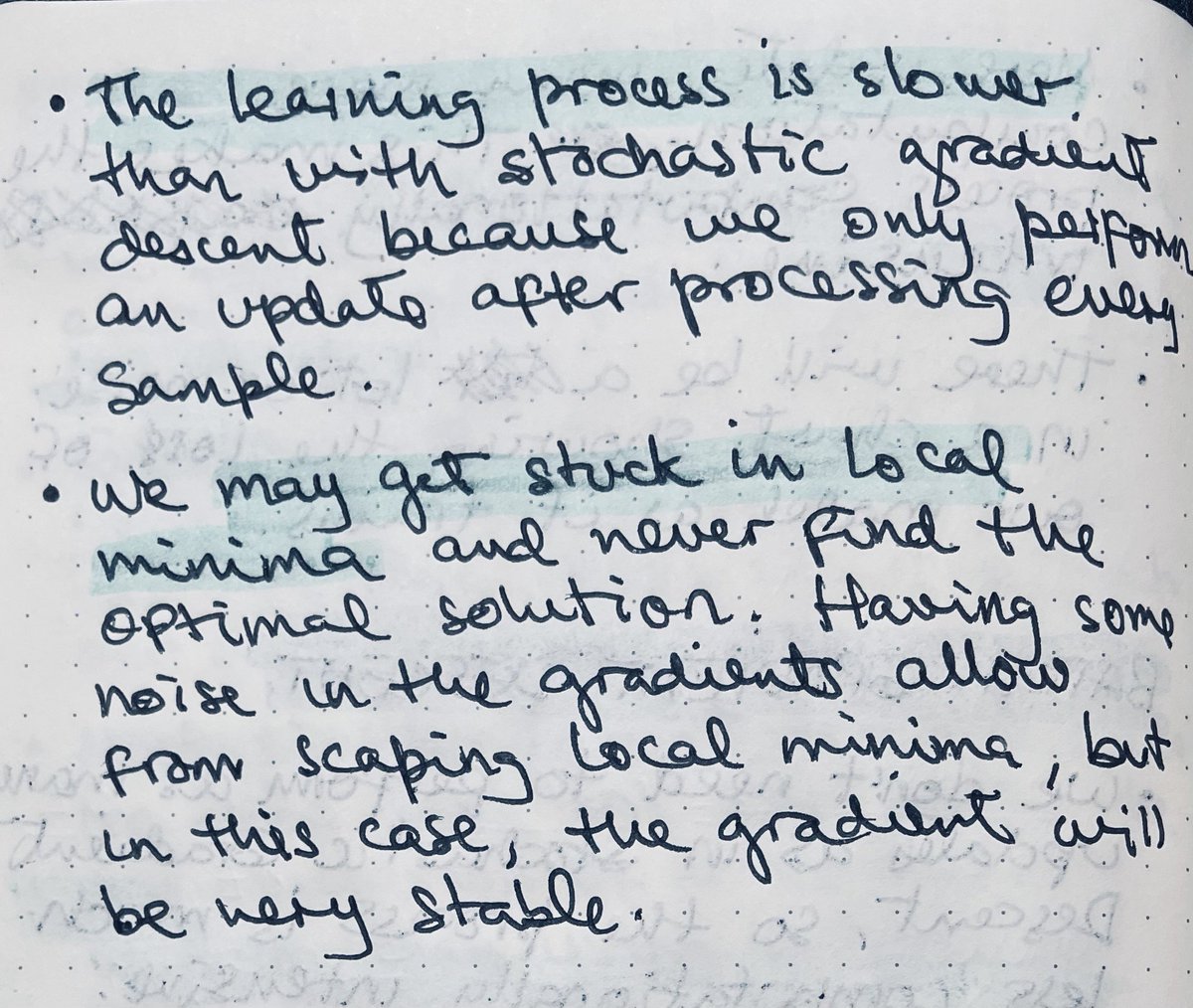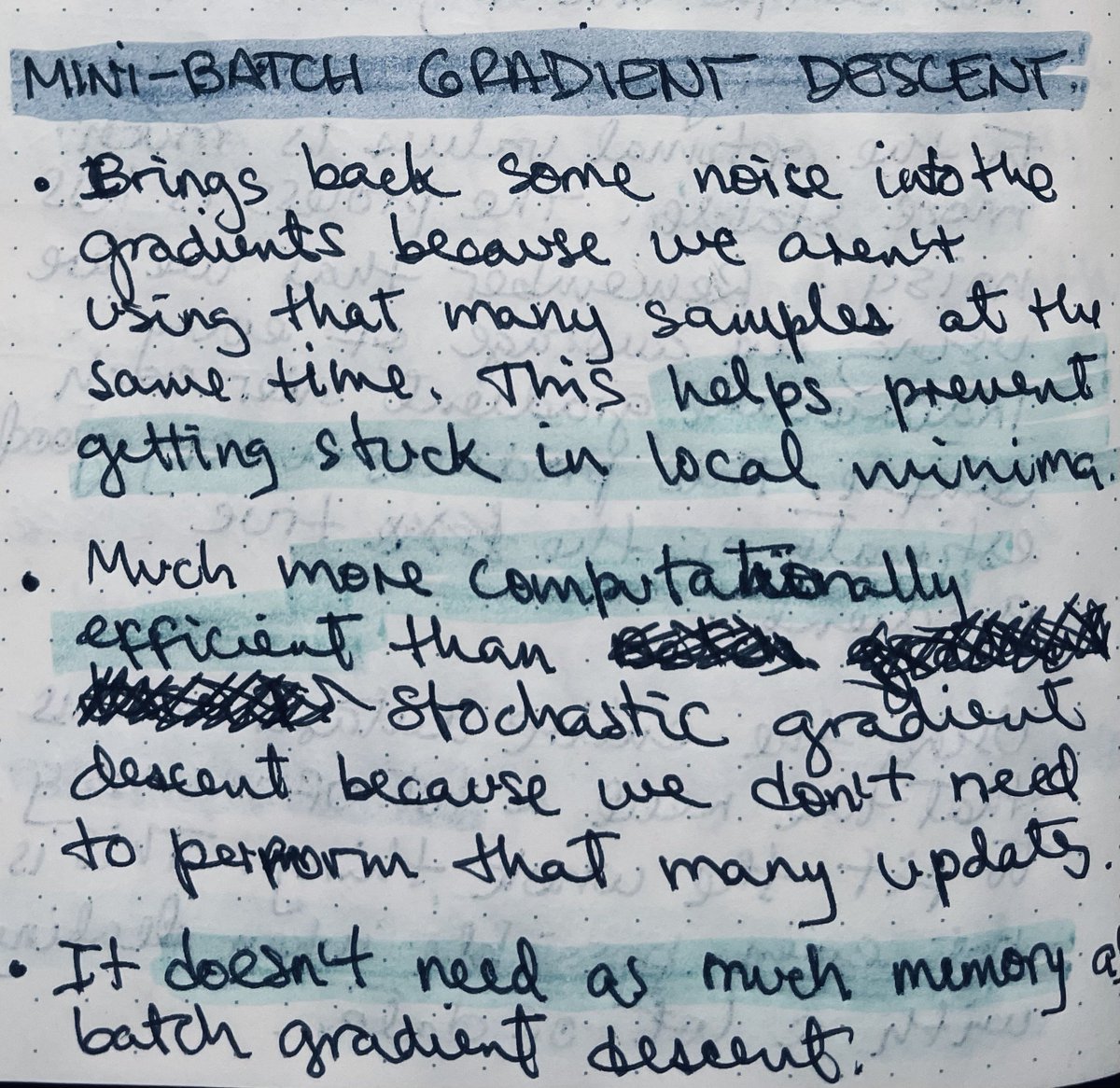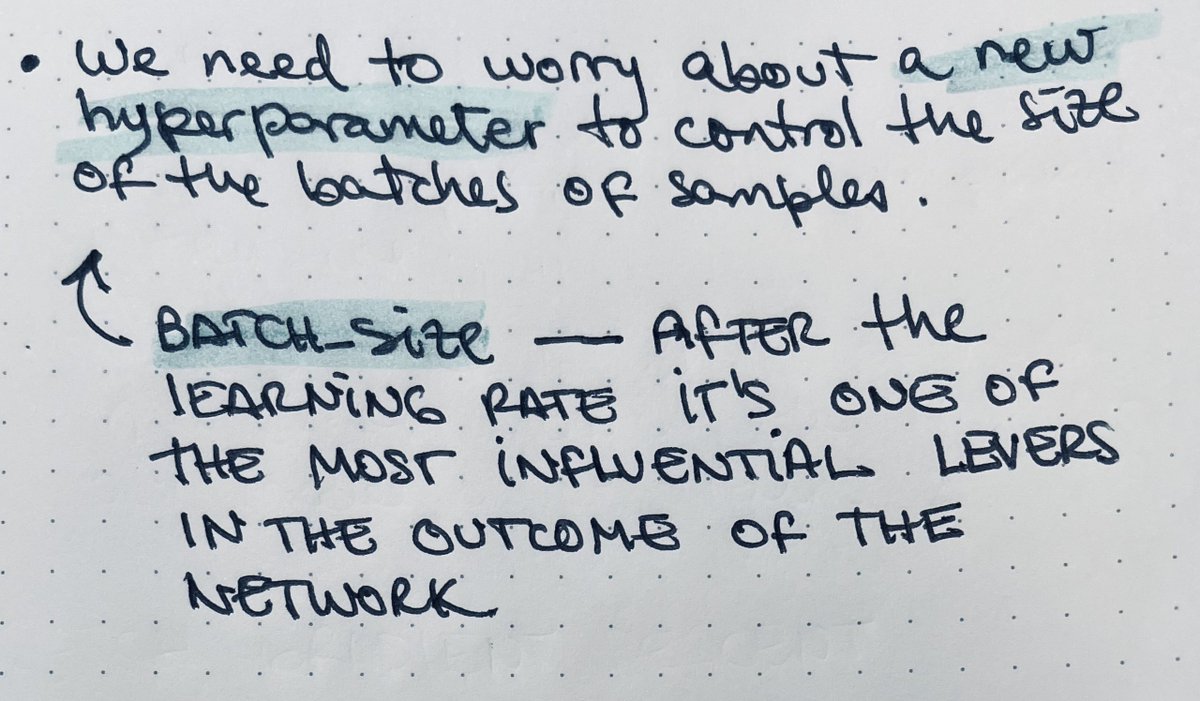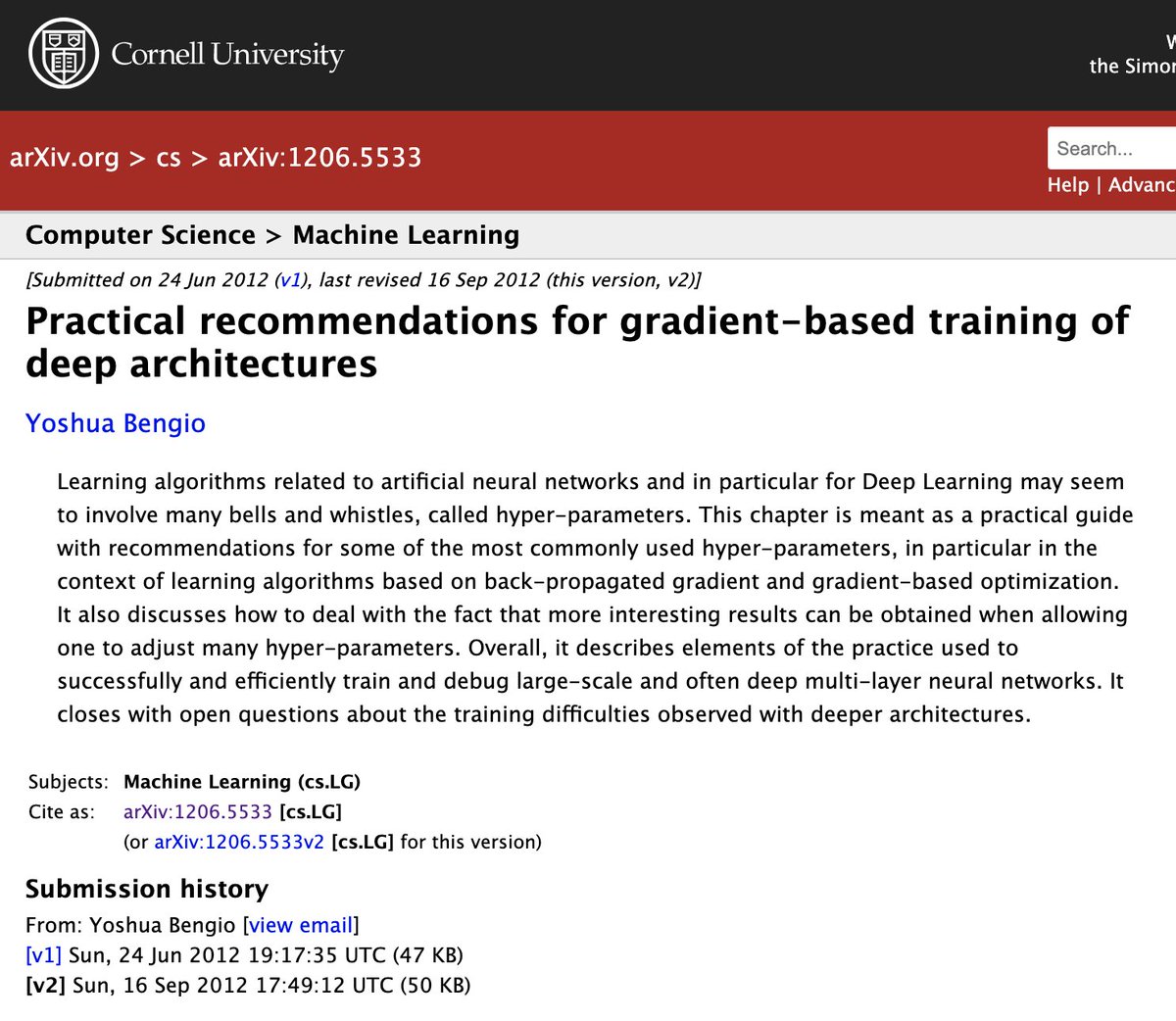Everything you need to know about the batch size when training a neural network.
(Because it really matters, and understanding it makes a huge difference.)
A thread.
(Because it really matters, and understanding it makes a huge difference.)
A thread.
Gradient Descent is an optimization algorithm to train neural networks.
The algorithm computes how much we need to adjust the model to get closer to the results we want on every iteration.
2/
The algorithm computes how much we need to adjust the model to get closer to the results we want on every iteration.
2/
We take samples from the training dataset, run them through the model, and determine how far away our results are from the ones we expect.
We call this "error," and using it, we compute how much we need to update the model weights to improve the results.
3/
We call this "error," and using it, we compute how much we need to update the model weights to improve the results.
3/
A critical decision we need to make is how many samples we use on every iteration.
We have three choices:
 Use a single sample of data.
Use a single sample of data.
 Use all of the data at once.
Use all of the data at once.
 Use some of the data.
Use some of the data.
4/
We have three choices:
 Use a single sample of data.
Use a single sample of data. Use all of the data at once.
Use all of the data at once. Use some of the data.
Use some of the data.4/
Using a single sample of data on every iteration is called "Stochastic Gradient Descent" (SGD.)
The algorithm uses one sample at a time to compute the updates.
5/
The algorithm uses one sample at a time to compute the updates.
5/
Advantages of Stochastic Gradient Descent:
 Faster learning on some problems.
Faster learning on some problems.
 The algorithm is simple to understand.
The algorithm is simple to understand.
 Avoids getting stuck in local minima.
Avoids getting stuck in local minima.
 Provides immediate feedback.
Provides immediate feedback.
6/
 Faster learning on some problems.
Faster learning on some problems. The algorithm is simple to understand.
The algorithm is simple to understand. Avoids getting stuck in local minima.
Avoids getting stuck in local minima. Provides immediate feedback.
Provides immediate feedback.6/
Disadvantages of Stochastic Gradient Descent:
 Computationally intensive.
Computationally intensive.
 May not settle in the global minimum.
May not settle in the global minimum.
 The performance will be very noisy.
The performance will be very noisy.
7/
 Computationally intensive.
Computationally intensive. May not settle in the global minimum.
May not settle in the global minimum. The performance will be very noisy.
The performance will be very noisy.7/
Using all the data at once is called "Batch Gradient Descent."
The algorithm takes the entire dataset and computes the updates after processing every sample.
8/
The algorithm takes the entire dataset and computes the updates after processing every sample.
8/
Advantages of Batch Gradient Descent:
 Computationally efficient.
Computationally efficient.
 Stable performance (less noise.)
Stable performance (less noise.)
9/
 Computationally efficient.
Computationally efficient. Stable performance (less noise.)
Stable performance (less noise.)9/
Disadvantages of Batch Gradient Descent:
 Requires a lot of memory.
Requires a lot of memory.
 Slower learning process.
Slower learning process.
 May get stuck in local minima.
May get stuck in local minima.
10/
 Requires a lot of memory.
Requires a lot of memory. Slower learning process.
Slower learning process. May get stuck in local minima.
May get stuck in local minima.10/
Using some of the data (more than one sample but fewer than the entire dataset) is called "Mini-Batch Gradient Descent."
The algorithm works like Batch Gradient Descent, with the only difference that we use fewer samples.
11/
The algorithm works like Batch Gradient Descent, with the only difference that we use fewer samples.
11/
Advantages of Mini-Batch Gradient Descent:
 Avoids getting stuck in local minima.
Avoids getting stuck in local minima.
 More computationally efficient than SGD.
More computationally efficient than SGD.
 Doesn't need as much memory as BGD.
Doesn't need as much memory as BGD.
12/
 Avoids getting stuck in local minima.
Avoids getting stuck in local minima. More computationally efficient than SGD.
More computationally efficient than SGD. Doesn't need as much memory as BGD.
Doesn't need as much memory as BGD.12/
Disadvantages of Mini-Batch Gradient Descent:
 New hyperparameter to worry about.
New hyperparameter to worry about.
We usually call this hyperparameter "batch_size."
This is one of the most influential parameters in the outcome of a neural network.
13/
 New hyperparameter to worry about.
New hyperparameter to worry about.We usually call this hyperparameter "batch_size."
This is one of the most influential parameters in the outcome of a neural network.
13/
Batch Gradient Descent is rarely used in practice, especially in deep learning, where datasets are huge.
Stochastic Gradient Descent (using a single sample at a time) is not that popular either.
Instead, Mini-Batch is the most used.
14/
Stochastic Gradient Descent (using a single sample at a time) is not that popular either.
Instead, Mini-Batch is the most used.
14/
But of course, we like to make things confusing.
In practice, we call it "Stochastic Gradient Descent" regardless of the batch's size.
When you hear somebody mention "SGD," keep in mind that they are probably specifying batches of samples (not just a single one.)
15/
In practice, we call it "Stochastic Gradient Descent" regardless of the batch's size.
When you hear somebody mention "SGD," keep in mind that they are probably specifying batches of samples (not just a single one.)
15/
There's a lot of research around the optimal batch size.
Your problem is different from any other problem, but empirical evidence suggests that smaller batches perform better.
(Small as in less than a hundred or so.)
16/
Your problem is different from any other problem, but empirical evidence suggests that smaller batches perform better.
(Small as in less than a hundred or so.)
16/
To make it even more concrete:
 "(...) 32 is a good default value."
"(...) 32 is a good default value."
Here is the paper I'm quoting. A good read if you want more of this: https://arxiv.org/abs/1206.5533
17/
 "(...) 32 is a good default value."
"(...) 32 is a good default value."Here is the paper I'm quoting. A good read if you want more of this: https://arxiv.org/abs/1206.5533
17/
TLDR; to finish the thread:
 Mini-Batch Gradient Descent is the way to go.
Mini-Batch Gradient Descent is the way to go.
 batch_size = 32 is a good starting point.
batch_size = 32 is a good starting point.
 Don't be lazy. Read the thread.
Don't be lazy. Read the thread.
 Mini-Batch Gradient Descent is the way to go.
Mini-Batch Gradient Descent is the way to go. batch_size = 32 is a good starting point.
batch_size = 32 is a good starting point. Don't be lazy. Read the thread.
Don't be lazy. Read the thread.
For more "breaking machine learning down" threads, stay tuned and check out @svpino.

 Read on Twitter
Read on Twitter